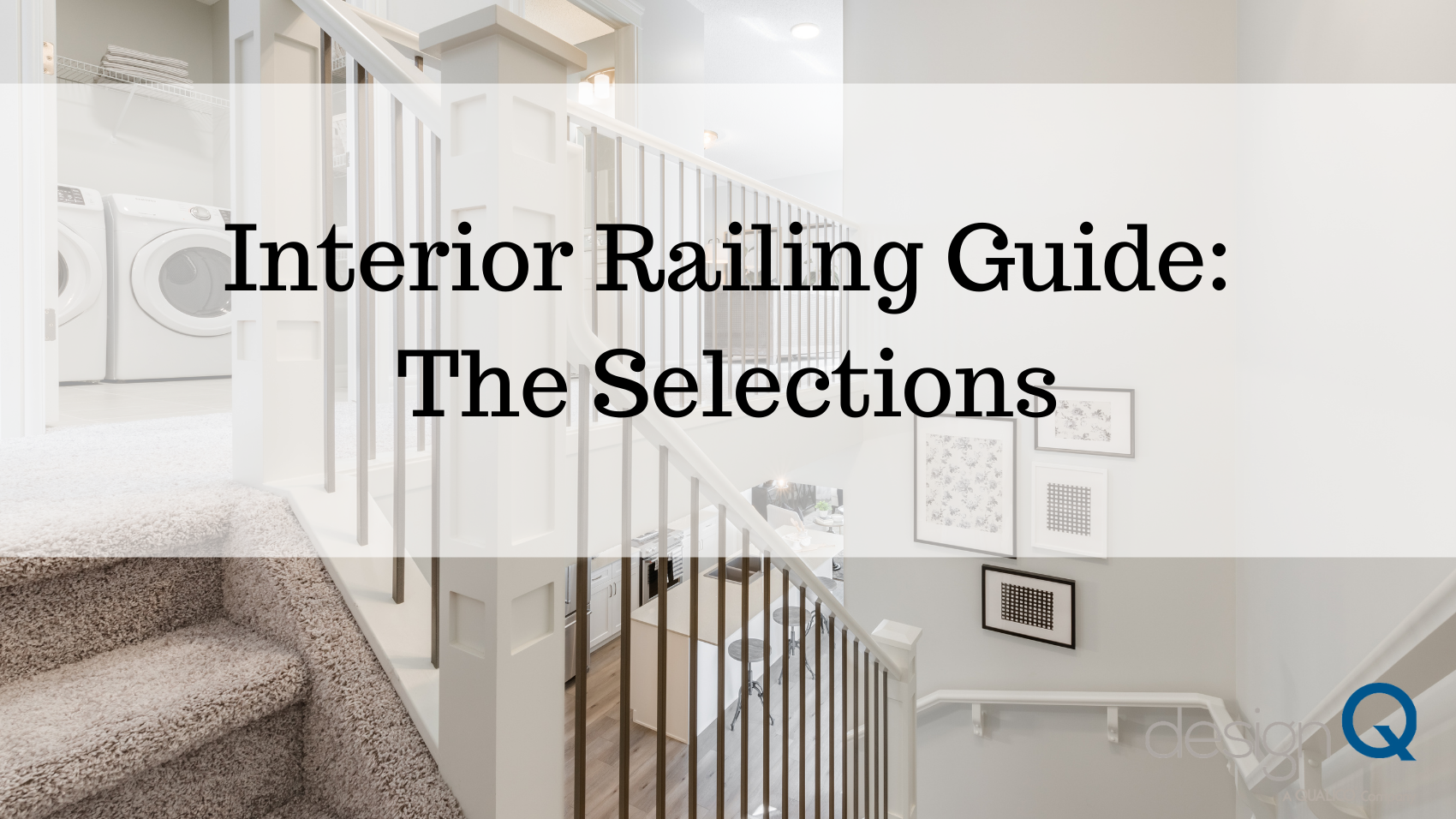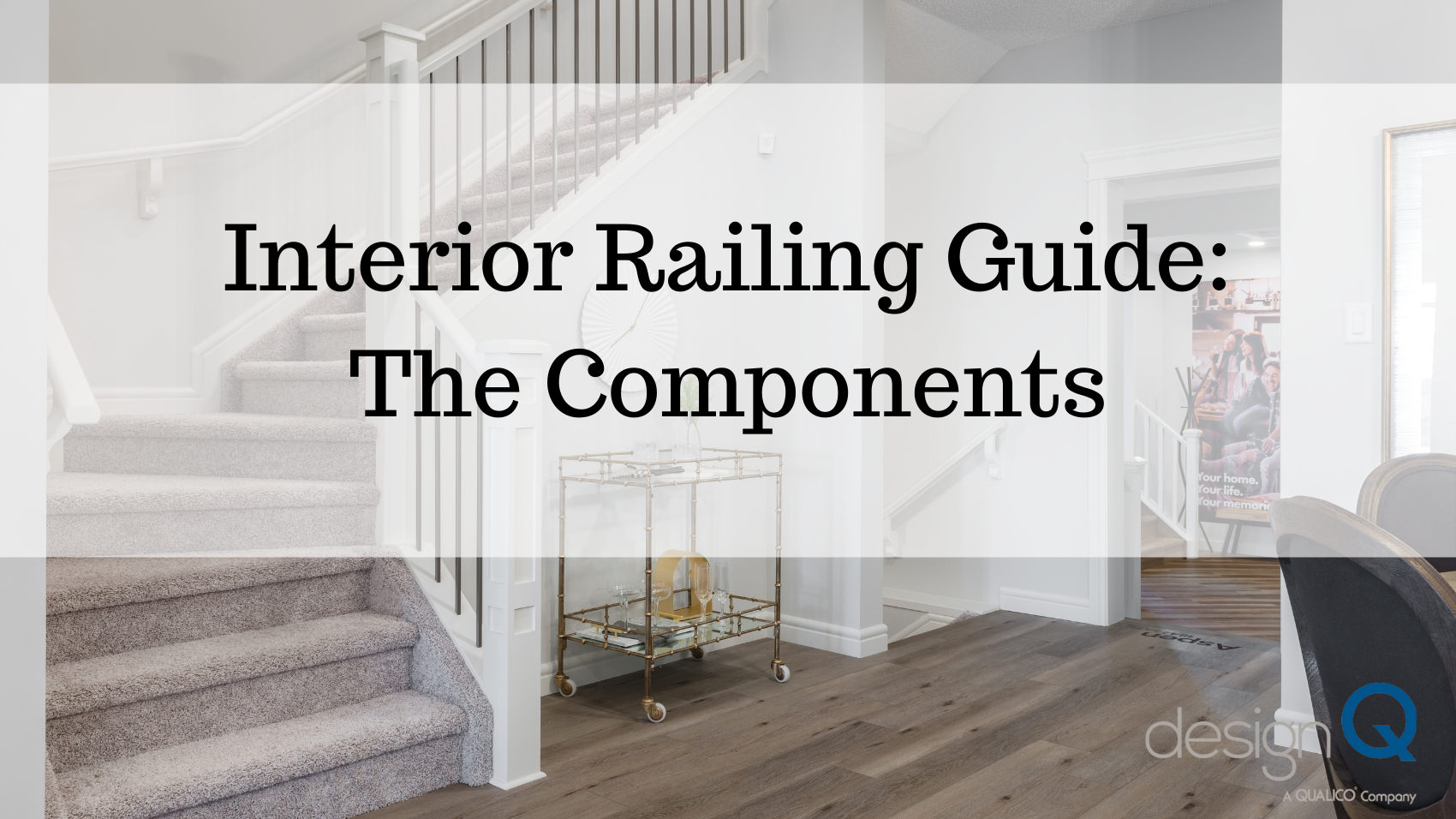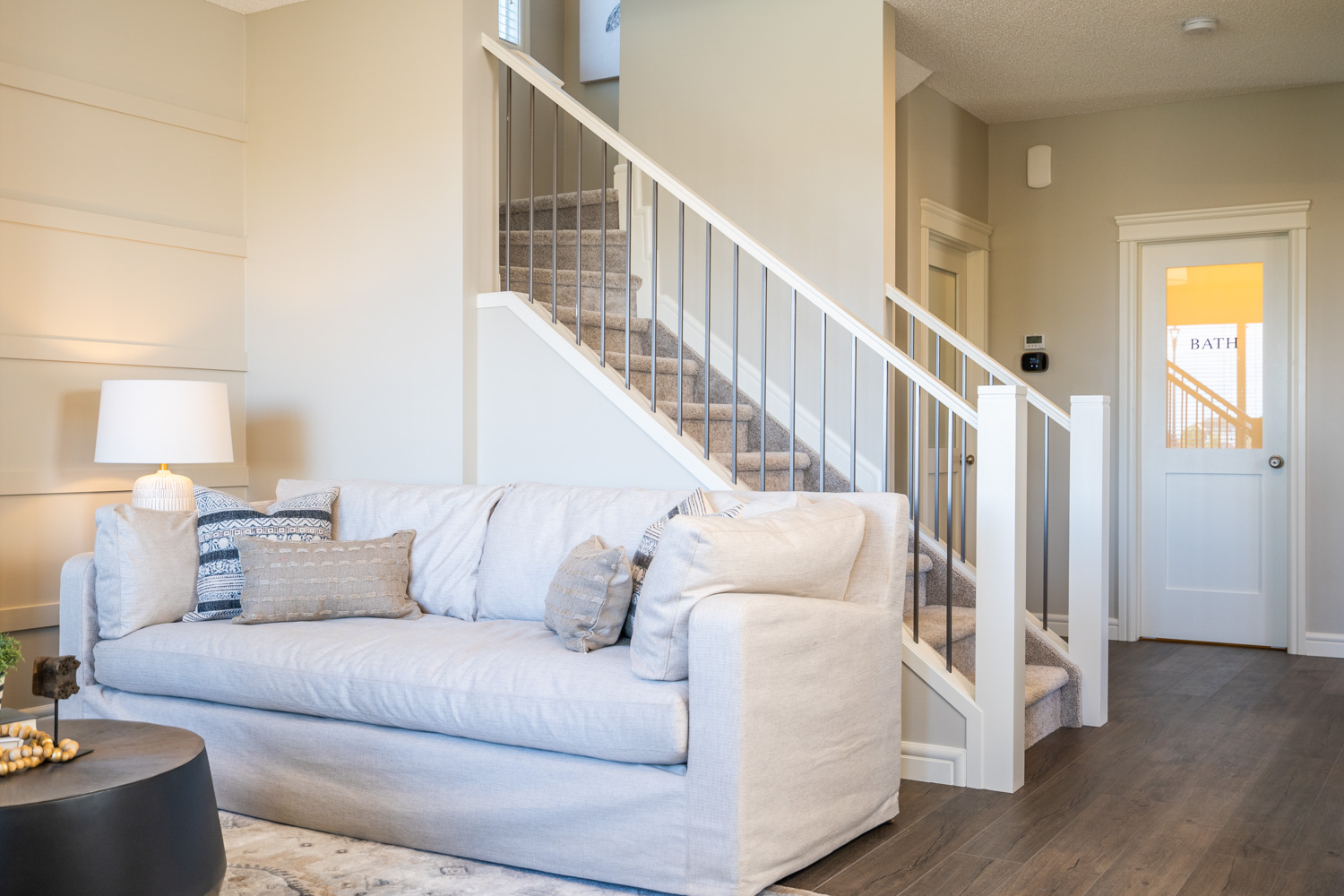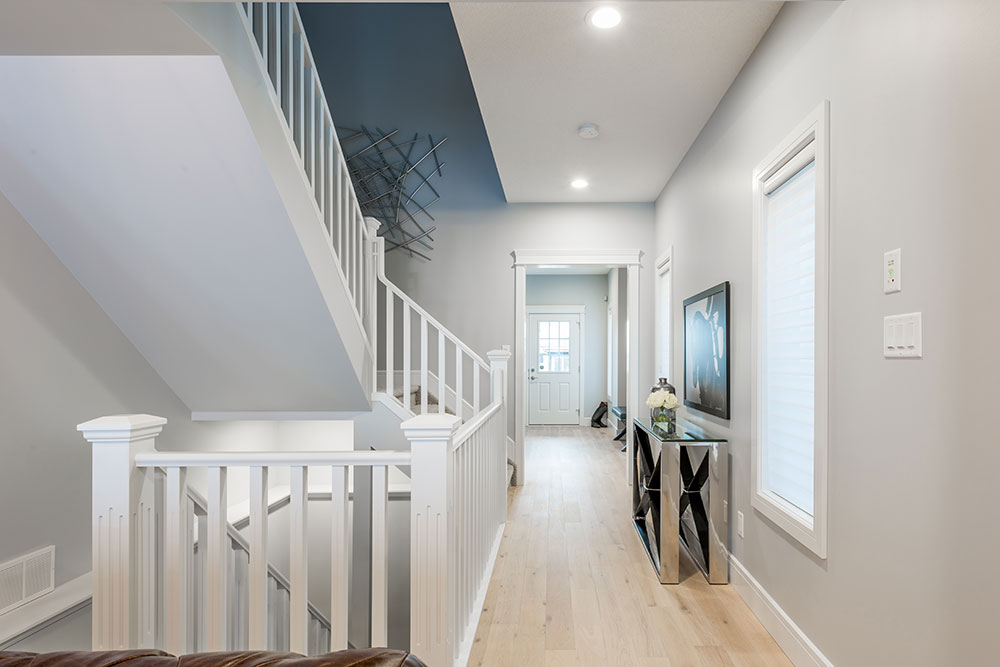When you have your interior selections appointment with designQ, you have the option to select interior railing for your home. Watch below as Chelsi show you the available selections, and walks you through the process of selecting interior railing.
Step 1: The Style
The first step in choosing your railing is to determine which style of interior stair railing you want in your new home. At designQ, we have 3 main styles to choose from:

Spindle Railing
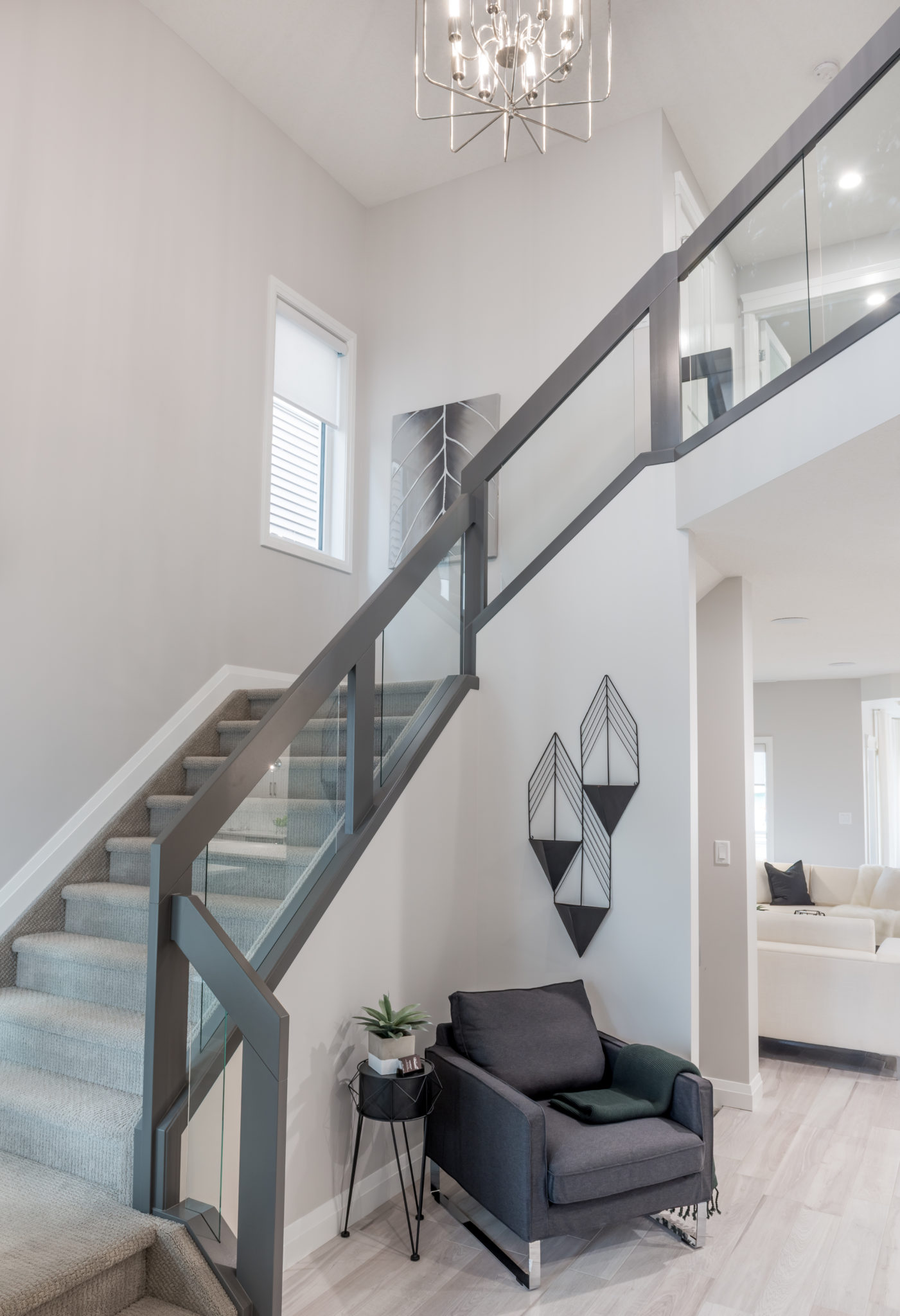
Glass Railing
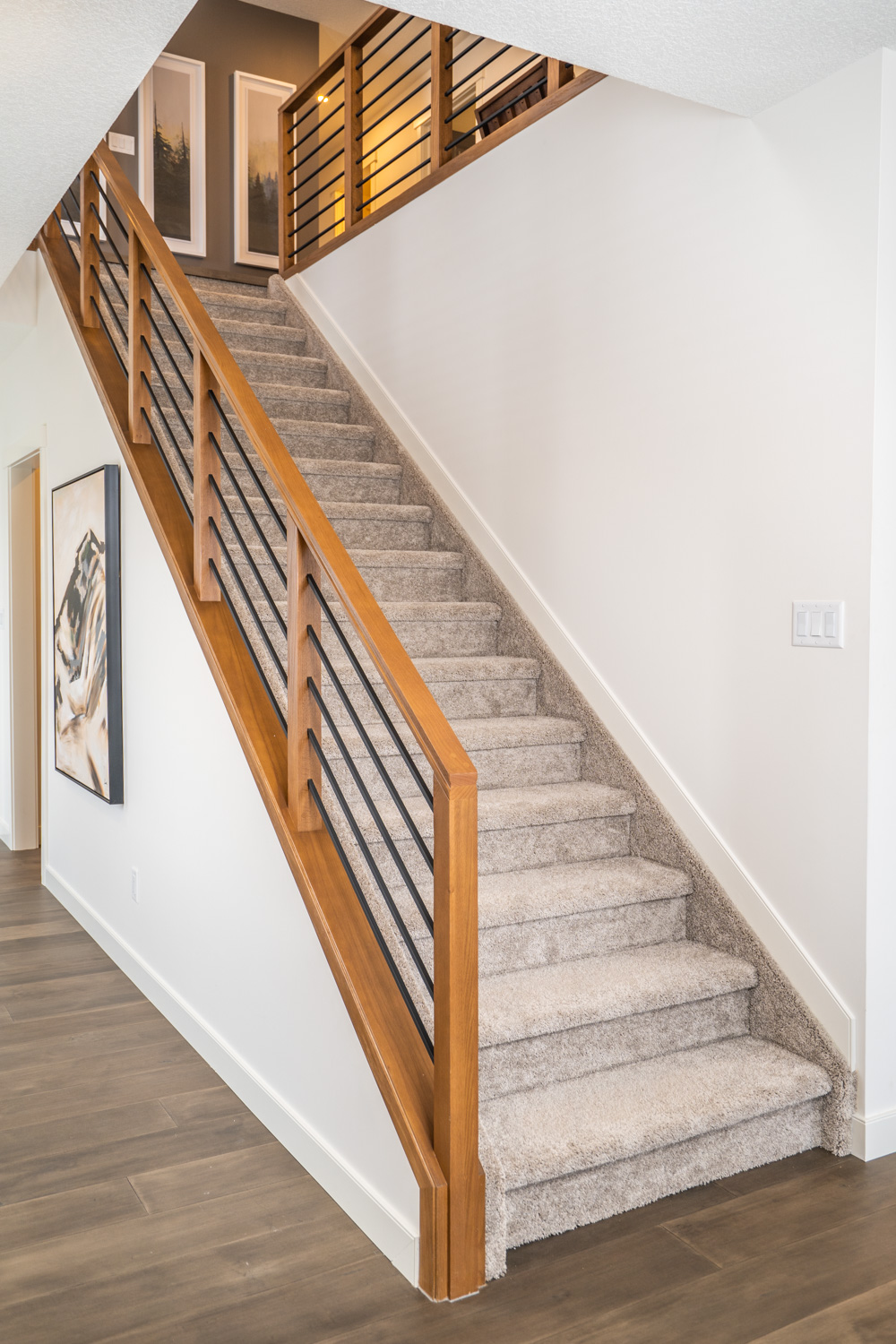
Horizontal Railing
Spindle Railing:
This is the most common type of railing. You can choose from either a wood spindle or a metal spindle.
The wood spindles come in 2 different styles – blank or textured. Click here to view the options.
The metal spindles come in 10+ patterns & styles, as well as multiple color options. Click here to view the options.
Glass Railing:
Glass railing has a very unique style. It is visually stunning and can really transform a home to make it seem more open & bright. Glass railing has only 3 post & cap options, however it can still be painted or stained to match the rest of your interior. Click here to view the options.
Horizontal Railing:
This railing style is a new addition to designQ, and to the design community in Alberta! Horizontal railing is very on trend, and offers a modern or industrial look to your home.
There is only 1 post & cap option with this style of railing, and 2 bar options – round or flat. However you are still able to choose the color of bar as well as the paint or stain of the railing.
Click here to view the options.
Step 2: The Post, Cap & Handrail
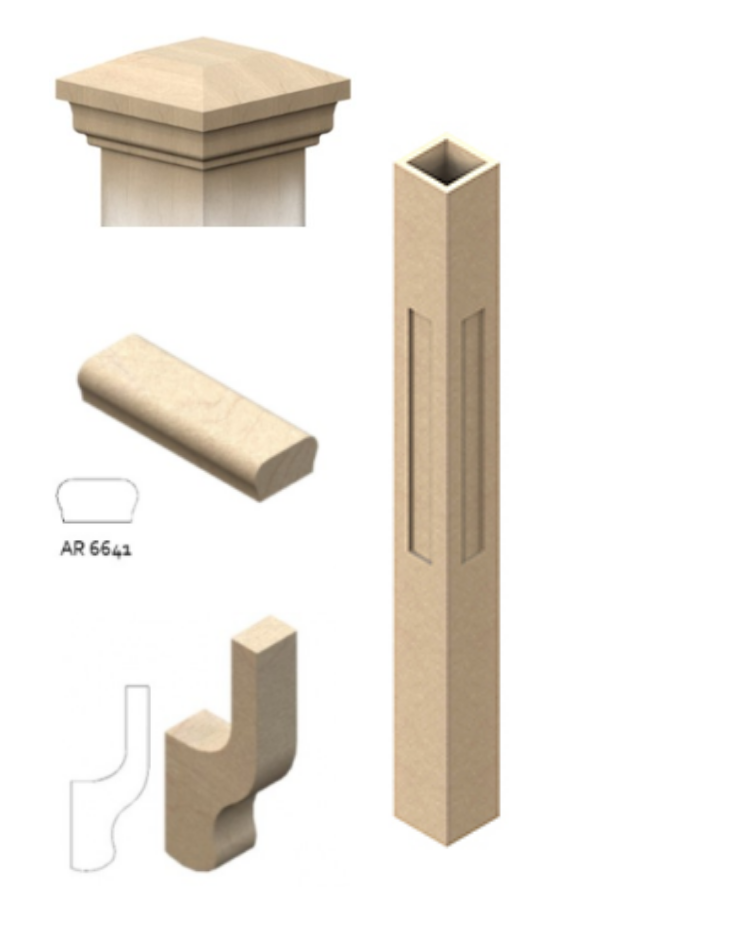
Once you have decided on the style of railing you want in your new home, you then have to select the post, cap & handrail type.
The options for these components will change depending on the style of interior stair railing you have chosen.
Click here to view the options for spindle railing. Glass & Horizontal railing are limited to more modern styles due to the construction of the railing.
Want to learn more about the components of interior railing? Click here to view our vlog!
Step 3: The Color
The final step in selecting your interior railing is the color! The components that would be painted or stained are:
- The Handrail
- The Post
- The Cap
- The Shoe (bottom part between the stairwell carpet & the spindles)
- Wood spindles if selected
If you are choosing to paint your railing, you can select from any color in the Dulux paint fan, however keep in mind some colors will be an extra charge.
If you are choosing to stain your railing, you can choose any stain color that would normally match your cabinets or hardwood (if applicable). When you select a stain, you are also able to pick the species of wood you would like your railing to be from either Maple or Oak.
Click here to view a few of our favorite color choices.

